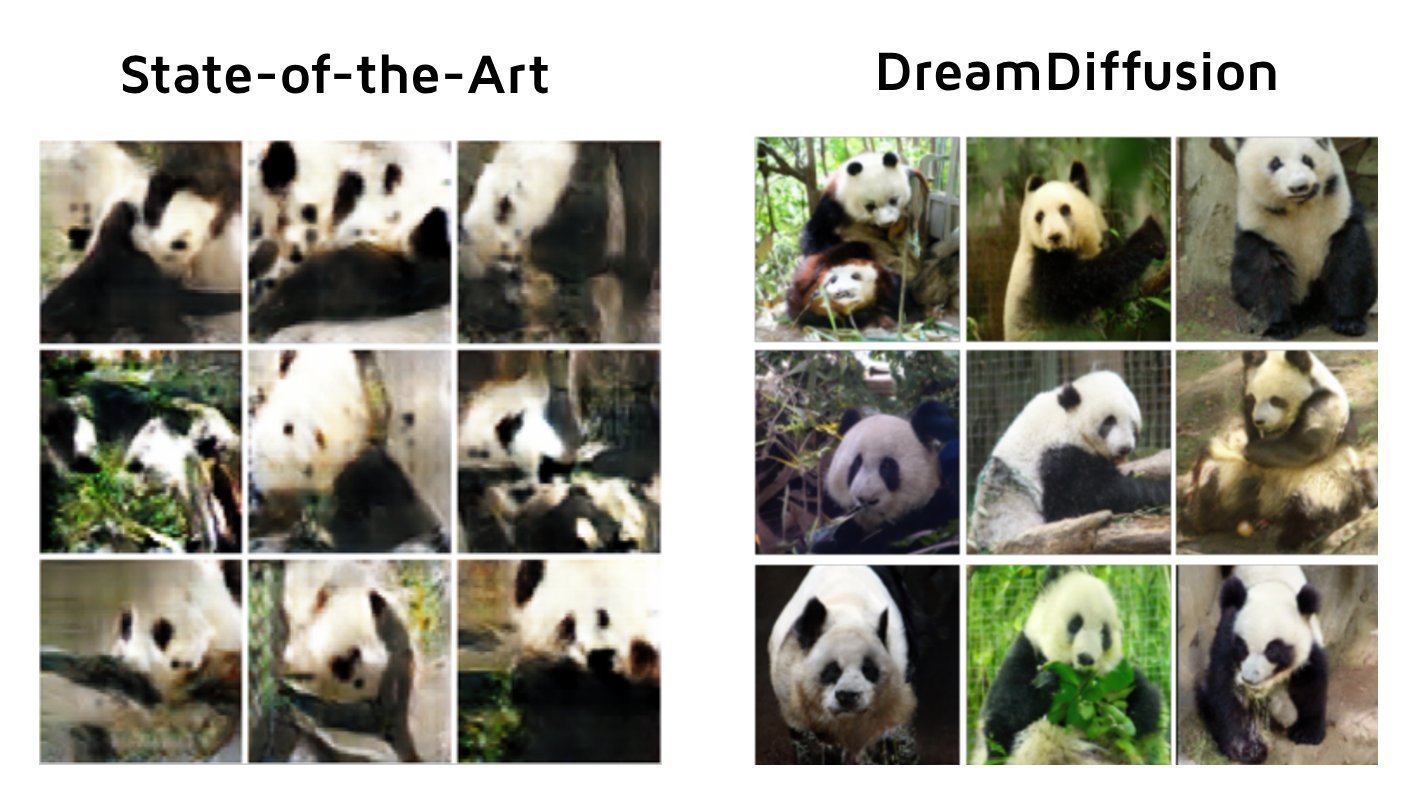Problem: I recently came across this crazy Tweet arguing for and discussing brain-to-image technologies. Similar to regular AI models that are trained on tagged datasets, brain-to-image technologies are trained on datasets that associate brain neuron firing and movement of blood in the brain to specific images. I would probably do a poor job describing it, but you can see the abstract of the research here:
This paper introduces DreamDiffusion, a novel method for generating high-quality images directly from brain electroencephalogram (EEG) signals, without the need to translate thoughts into text. DreamDiffusion leverages pre-trained text-to-image models and employs temporal masked signal modeling to pre-train the EEG encoder for effective and robust EEG representations. Additionally, the method further leverages the CLIP image encoder to provide extra supervision to better align EEG, text, and image embeddings with limited EEG-image pairs. Overall, the proposed method overcomes the challenges of using EEG signals for image generation, such as noise, limited information, and individual differences, and achieves promising results. Quantitative and qualitative results demonstrate the effectiveness of the proposed method as a significant step towards portable and low-cost ``thoughts-to-image'', with potential applications in neuroscience and computer vision.
What would a world look like that goes directly from thought to image or (better yet) thought to video?
Subscribe here to get access to the first 500 ideas from our blog. For just one coffee a month, you can have access to more than $500 billion dollars of ideas. What's not to love?
Solution: Similar to NeuraLink, this business would exist to create thought-to-computer interfaces. However, while NeuraLink is focused on trying to create implants within the body which can be used to control devices, this business would specifically try to use non-invasive techniques. As early as 2008, Phys.org reported about baseball caps that could “read your mind.” As described by Lisa Zyga,
“It looks like an ordinary baseball cap. But when you put it on, the cap detects and analyzes the electroencephalogram (EEG) signals from your brain. It can even tell you if you’re getting too sleepy when driving based on your brain wave patterns. Similar technology could also allow you to control home electronics such as TVs, computers, and air conditioners, all by just thinking about them.”
It seems that feasibly this technology can exist, so why not take it one step further and use this technology in order to control machines?
Of course, there are risks to technology like this.
Vice News’ Samantha Cole recently reported about factories in China that scan workers’ brainwaves in order to increase efficiency and profits. As she writes,
At a factory in Hangzhou, China, production line workers are allegedly being outfitted with brain-reading hats and helmets. They read workers’ emotions and use artificial intelligence algorithms to “detect emotional spikes such as depression, anxiety or rage,” according to the South China Morning Post.
Similarly, the MIT Technology Review described the issue as well.
MIT Technology Review notes that the details in the story (or lack thereof) raise suspicions: What we can reliably detect from over-the-skin EEG sensors about human emotions is still fairly unclear, and there’s scant possibility that one company gathered enough information to contribute to millions of dollars in profits, as the Post claims one power company spokesperson said:
"The technology is also in use at in Hangzhou at State Grid Zhejiang Electric Power, where it has boosted company profits by about 2 billion yuan (US$315 million) since it was rolled out in 2014, according to Cheng Jingzhou, an official overseeing the company’s emotional surveillance programme."
The harms and risks are important to consider. But, here are three ideas from ChatGPT about how this could become a billion-dollar business.
Neurovisual Entertainment Platform: Create a cutting-edge platform that offers immersive and interactive visual experiences directly generated from users' brain activity. By utilizing DreamDiffusion or a similar technology, users could experience personalized visual content, such as movies, games, and virtual reality simulations, without the need for traditional input devices. The platform could collaborate with content creators, game developers, and filmmakers to provide a unique and mind-bending entertainment experience. Revenue streams could include subscriptions, content licensing, and partnerships with hardware manufacturers.
Neurofeedback Therapy and Training: Develop a neurofeedback system that utilizes EEG signals and DreamDiffusion to provide real-time visual feedback to individuals seeking mental and emotional well-being. The system could assist in areas such as stress reduction, anxiety management, attention improvement, and relaxation training. By translating users' brain activity into visually stimulating experiences, the platform could help individuals understand and regulate their cognitive states. This could be marketed to therapists, wellness centers, and individuals interested in self-improvement. Revenue could be generated through licensing the software, offering hardware packages, and providing subscription-based services.
Cognitive Market Research and Neuromarketing: Apply the DreamDiffusion technology to the field of market research and consumer insights. Develop a system that can analyze EEG signals to understand individuals' subconscious responses to various visual stimuli, such as advertisements, product designs, and branding elements. By providing accurate insights into consumers' preferences, emotional reactions, and attention levels, businesses could optimize their marketing strategies, product development, and user experiences. The platform could be offered as a software-as-a-service (SaaS) solution to marketing agencies, research firms, and large corporations seeking a deeper understanding of their target audiences.
Contributed by: Michael Bervell (Billion Dollar Startup Ideas) w/ help from ChatGPT


